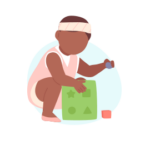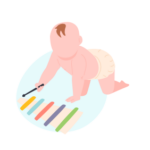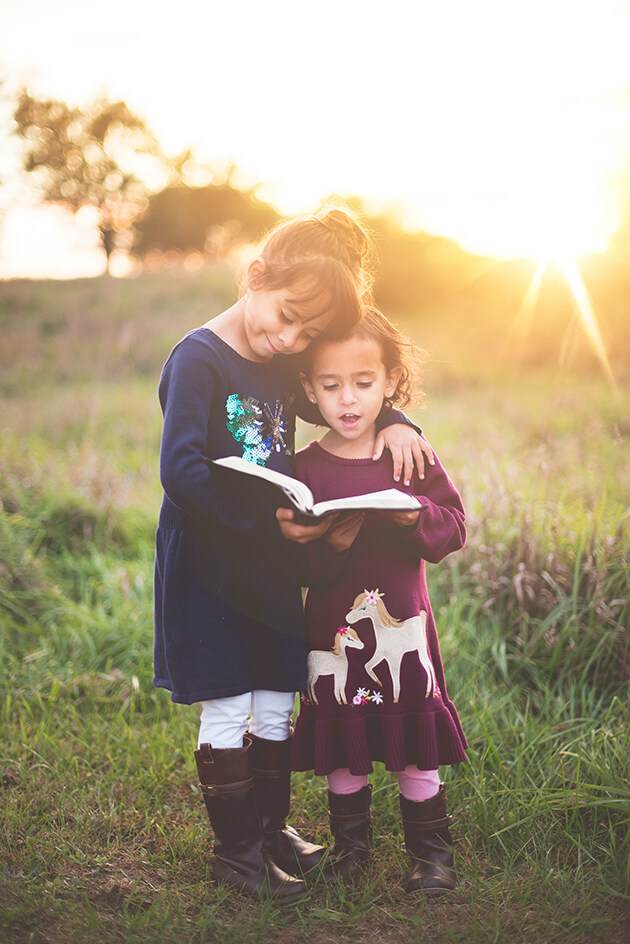Children go to nurseries to get the best start in life. Early years practitioners and owners try their very best to provide exciting new experiences that will boost a child’s development.
A lot of these experiences will be tied to Early Learning Goals (or your regional equivalent). But what are the Early Learning Goals, and when did they come about?
Read on to learn more about Early Learning Goals, and find links to fantastic activities tied to the 7 areas of learning and development!
A reminder on the Early Learning Goals
The Early Learning Goals are made up of 17 statements, which are spread across the 7 areas of learning and development. The 17 ELGs set out the levels of development expected by the end of the EYFS. They are used by reception teachers (and occasionally nursery practitioners) to complete the statutory required EYFS profile at the end of Foundation 2 (F2).
The latest Early Learning Goals (ELGs) were introduced in July 2020 and were made a statutory requirement from September 2021. In September 2023 a few minor changes were made to the EYFS statutory framework, these changes did not impact the ELG guidance.
The ELGs and the newest EYFS framework
You can find all 17 of the Early Learning Goals in the latest EYFS statutory framework document. Neatly organised under each of the seven areas of learning and development.
The framework is clear to remind practitioners not to use the ELGs as a curriculum. Development Matters is a Department for Education (DfE) created document which is not compulsory for nurseries to use- although most do. This non-statutory guidance is designed to be used alongside the framework to create a curriculum with the ELGs in mind but not driving the experiences the children will have access to.
Reception teachers (and, on occasion, nursery practitioners) will use the ELG to form their assessment judgements for the child’s EYFS profile. The profile will be completed in the final term of the year in which the child turns 5. In unusual circumstances, you may find a child still with you in nursery in the summer term after they have turned 5 before they join school in the September. In this case, you’d complete their EYFS profile and, therefore, need to use the ELGs to guide your judgements.
How do Early Learning Goals support EYFS outcomes?
Early years outcomes assess where a child is in relation to the expected level of development for their age. Children are assessed continually through regular observations and formative assessments, but there are some biggies when it comes to EYFS assessment.
The EYFS assessment milestones are when a child is 2 years old (for the progress check) and at the end of F2 (the EYFS profile), which assesses all they have learned and understood from the EYFS and their readiness for year 1.
The revised Early Learning Goals help reception teachers to make a best-fit judgement about the child’s level of development. They can decide if a child is emerging or expected in each of the 17 ELGs. This then determines if a child is deemed to have a ‘Good Level of Development (GLD)’ and is ready to begin year 1 with a bang.
The 7 areas of learning and development
The 7 areas of learning and development span the breadth of the skills, knowledge and understanding a child needs to learn by the end of EYFS. They are split into three prime areas and four specific areas of learning.
Prime Areas of Learning and Development
- Communication and Language
- Personal, Social and Emotional Development
- Physical Development
Specific Areas of Learning and Development
- Literacy
- Mathematics
- Understanding the World
- Expressive Arts and Design
When planning for and facilitating learning in each of the seven areas, practitioners are to be driven by the characteristics of effective teaching and learning:

Playing and Exploring:
Encouraging children to ‘have a go’

Active Learning:
Concentrating on an activity of interest, curiosity learning and demonstrating the resilience to persevere with a task

Creating and thinking critically:
Developing own ideas and making links between learning
Each of the areas of learning and development have their own Early Learning Goals. Here are the focuses of the ELG for each area, you can find each ELG in detail in the statutory framework, along with links to activities covering those areas.
- Listening, Attention and Understanding
- Speaking
- Building Relationships
- Managing Self
- Self-Regulation
- Gross Motor Skills
- Fine Motor Skills
- Comprehension
- Word Reading
- Writing
- Number
- Numerical Patterns
- People, Culture and Communities
- The Natural World
- Past and Present
- Creating with Materials
- Being Imaginative and Expressive
For more brilliant EYFS activities, check out our Ultimate guide to EYFS activities blog post and easily cover the seven areas of learning and development!
How have the Early Learning Goals changed?
The number of ELGs didn’t change in the revised framework in 2021, but the definitions and focus did. The purpose behind the ELG changes was to ensure consistency of application across reception teachers. With the changes came the reduction of local authority moderation of EYFS profiles. Schools are now expected to submit their EYFS profile data to their local authority whilst participating in moderation in-house.
The new Early Learning Goals highlight the need for:
- The promotion of a love of reading
- Self-regulation strategies and understanding
- The importance of phonics learning
- The need to build self-regulation strategies
- The improvement in master within Maths
Assessment terminology also altered, moving from emerging, expected and exceeding judgements for each ELG to just emerging and expected. Some nurseries still like to highlight when pupils are mastering statements using their EYFS learning and tracking software. However you choose to monitor a child’s development, consistency across your setting is key.
Sign up to our newsletter for more great content insights like this!
Why are the Early Learning Goals important?
Communication and Language
The ability to communicate is the most fundamental life skill a child can have. Good verbal and non-verbal communication skills are needed to build those first friendships and actively participate in learning.
For those of you in areas of social disadvantage, you will likely be tackling communication and language challenges across the board. 1 in 5 children begin primary school without the necessary language skills. The figure jumps to 1 in 3 for those in areas of social disadvantage. The need to use communication and language games to get children chatting is ever-growing!
Personal, Social, and Emotional Development
Learning about yourself and others underpins the Fundamental British Values expected to underpin children’s learning. It also helps to build solid friendships, resilience and self-esteem. Highlighted in the ELG changes, self-regulation is a skill we can introduce in the early years to help children socially, through engaging EYFS PSED activities.
Physical Development
We all know the importance of building strength, stamina and coordination through play in the early years. The ELGs for physical development stretch further into developing healthy habits at an early age, introducing health and self-care goals (including oral health).
Literacy
An effective early reading curriculum helps children to develop a love for reading and storytelling. Delivering magic and wonder through the medium of story can help give imaginative ideas for self-led play, boost language acquisition and improve skills that stretch far beyond academics.
It is found that children with vocabulary difficulties at age 5 are three times more likely to have mental health challenges in adulthood.

Mathematics
Maths can incorrectly be thought of only as numbers in isolation. When, in fact, number covers all things from pirate treasure maps to water play and even art projects. Incorporating estimation-based problems into your EYFS Maths activities helps to boost scientific thinking and increase reasoning skills.
Understanding the world
The new Early Years Framework now focuses on people, cultures, and communities in the natural world, both past and present. Underpinned by EYFS British Values, Understanding the World activities help children not only understand their own story and history but to connect with the history of the community they belong to.
Expressive Arts and Design
The final area of the seven areas of learning and development focuses on the important skill of self-expression. Building confidence through EYFS EAD activities helps children build their self-esteem and can be used as self-regulatory and sensory activities.
Resources for the Early Learning Goals
Even though reception teachers mainly use the Early Learning Goals for assessment, it is important to know what criteria are used to determine whether the children in your nursery reach a GLD.
There are lots of resources available to help build the knowledge, skills and understanding needed to achieve the expected level across all 17 of the Early Learning Goals. Dipping into purposeful EYFS activities that are separated by area of learning is a good place to start.
For more brilliant EYFS activities, check out our Ultimate guide to EYFS activities blog post and easily cover the seven areas of learning!